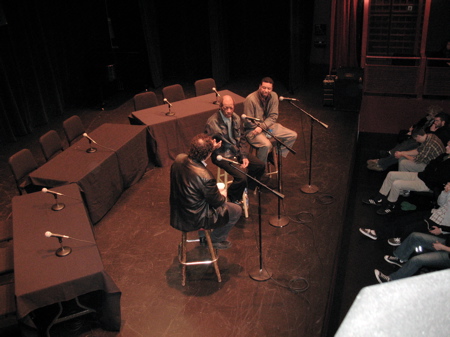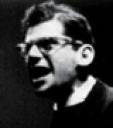Maybe if your weekend started out, as mine did, listening to “Howl” and then winding its way toward the Portland Jazz Festival, you’d be figuring out a way to combine the two, too. Not that it’s THAT difficult. Ginsberg, we know from his early journals (“The Book of Martyrdom and Artifice,” edited by Juanita Lieberman-Plimpton and Bill Morgan), listened to jazz — it was unavoidable at Columbia College in the ’40s and Manhattan in the ’50s. His tastes were pretty broad. He lists Lionel Hampton and Glenn Miller. Billie Holiday and Pearl Bailey. Dizzy Gillespie and Artie Shaw. Coleman Hawkins and a bunch of classical stuff (Mahler, Bach, Beethoven).
“Howl” itself has some jazz references, though none more direct than in Ginsberg’s introduction. He says “Howl” was “built on a bop refrain” — “the ideal being, say, Lester Young in Kansas City in 1938, blowing 72 choruses of “The Man I Love” until everyone in the hall was out of his head.” Which leads us back to Billie Holiday. Who was NOT performing at the jazz festival, more’s the pity.
We did have Ornette Coleman on hand, of course (in the clip it’s Spain 1987 and he’s playing with Don Cherry, Billy Higgins and Charlie Haden), though it’s hard to imagine him blowing 72 choruses of “The Man I Love.” It would have violated his Prime Directive against repetition, for one thing. I imagine him exploding the first chord of the first chorus and then spending the rest of the evening picking over the debris field for sounds he hadn’t heard before. Which would have been hard to capture in a poem, at least one that made sense in a representational sort of way.
That’s what Ornette did on Friday night, and if it didn’t strictly “follow” (see below) in the way we’ve come to expect from our music, that’s our problem: He’s been blowing this way since 1960 or so. We’ve been warned. Sharp objects are involved and the sweetness of the sound means that projectiles coming your way may seem closer than they appear.
“Holy the groaning saxophone! Holy the bop apocalypse!” Ginsberg writes in the “Footnote to Howl.” And here he might have referred to the SFJazz Collective, which played after Ornette’s concert on Friday, but not really. They are smart, savvy, and they’ve dedicated their season to Wayne Shorter, who could groan, I suppose, but maybe not the apocalypse part. More quicksilver or thoughtful, even caring, which is how Joe Lovano played his 1964 “Infant Eyes,” a melting opening solo.
OK, the key jazz lines of “Howl,” at the end of Part I: “…the madman bum and angel…rose reincarnate in the ghostly clothes of jazz in the goldhorn shadow of the band and blew the suffering of America’s naked mind for love into an eli eli lamma lamma sacthani saxophone cry that shivered the cities down to the last radio/with the absolute heart of the poem of life butchered out of their own bodies good to eat a thousand years.”
Mercy! As carnivorous as The Bad Plus seemed Saturday afternoon, big and, well, hungry, hunting down big game with their covers of Ornette Coleman, Milton Babbitt (!), David Bowie and Nirvana songs, firing salvos of percussion (thank you David King) and a general lurching, staccato approach that re-loaded mid-song and emptied the clip — even as aggressive as they were (and in fairness, they could also be sweet as pie (thank you Reid Anderson and Ethan Iverson), and the audience loved them for it), Ginsberg’s naked desire for ecstasy and deliverance outstrips them.
Maybe not Ornette, though. You just can’t tell about Ornette.


 Wagner’s a mighty guy, but he’s no winker. Puccini’s plenty theatrical, but he wouldn’t wink if a butterfly fluttered past his eyeball. OK, Mozart winked. A lot. And I suppose you could call the elephant stomping around the stage in “Aida” a wink, but really, that’s more of a giant-size goggle.
Wagner’s a mighty guy, but he’s no winker. Puccini’s plenty theatrical, but he wouldn’t wink if a butterfly fluttered past his eyeball. OK, Mozart winked. A lot. And I suppose you could call the elephant stomping around the stage in “Aida” a wink, but really, that’s more of a giant-size goggle. So,
So,  Looking ahead: This weekend the
Looking ahead: This weekend the 
 So, what are we to make of
So, what are we to make of